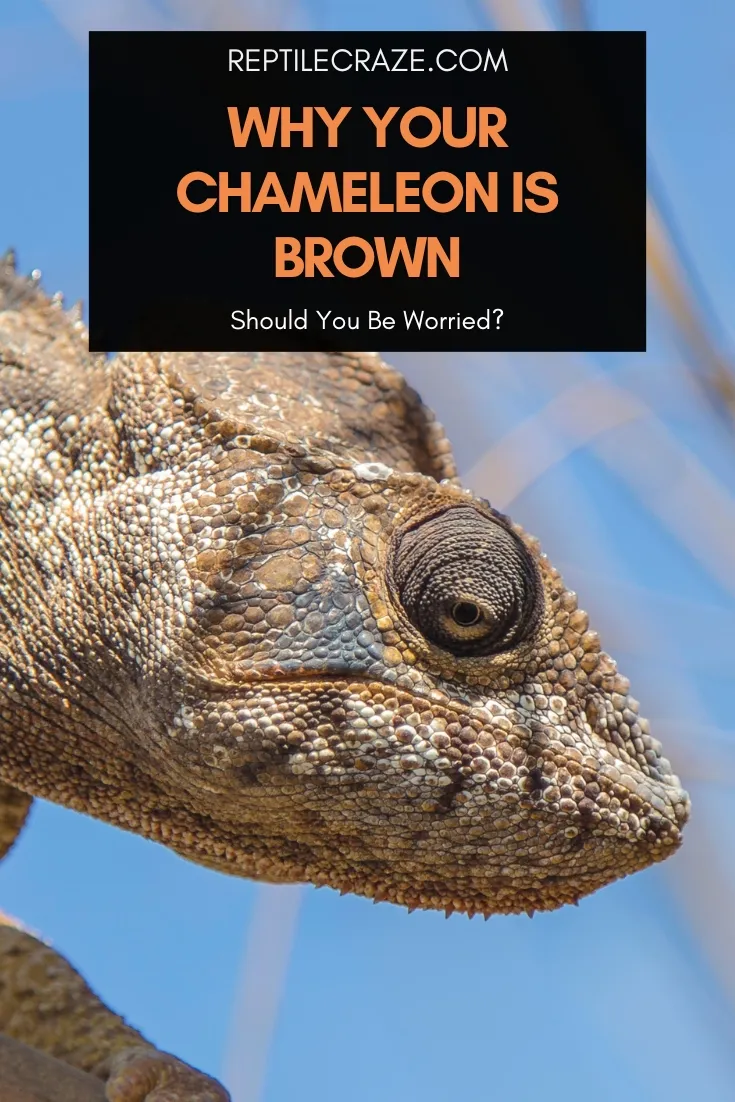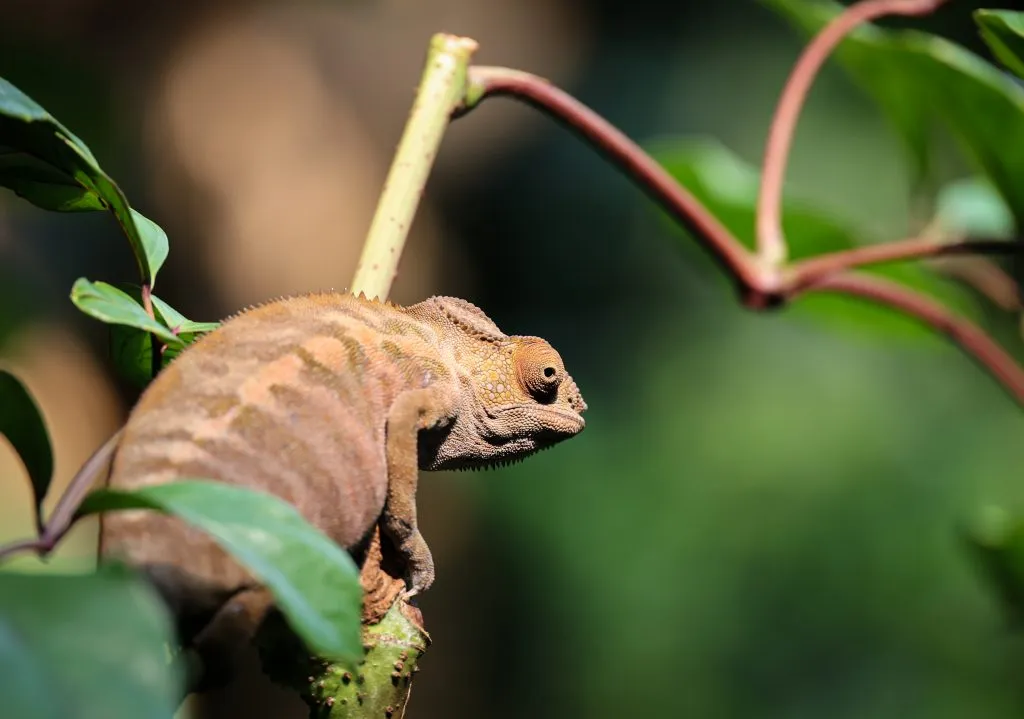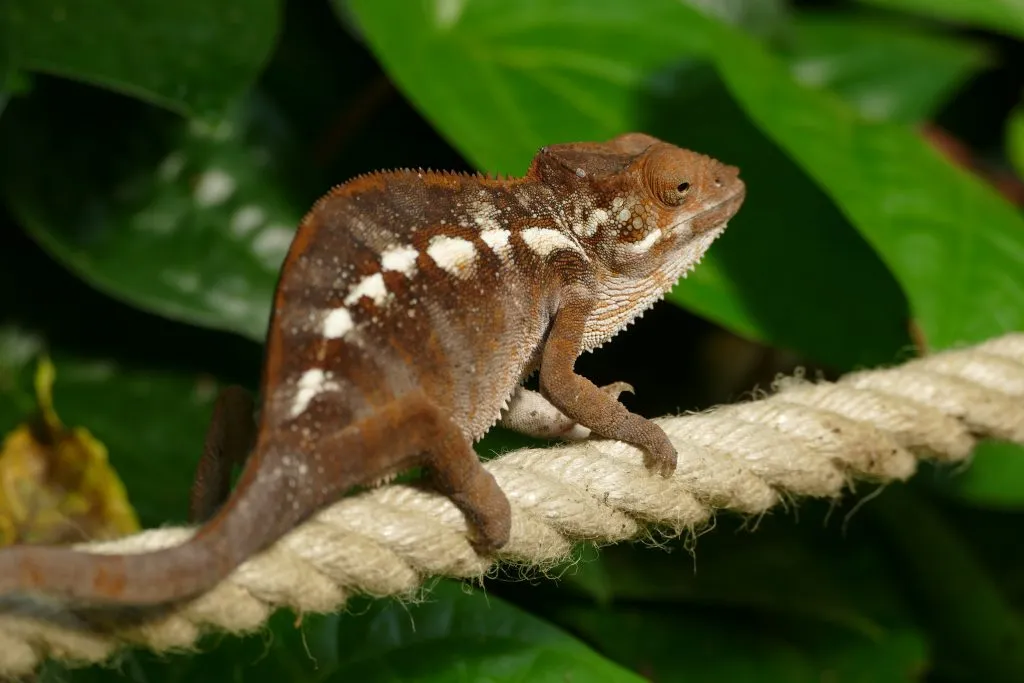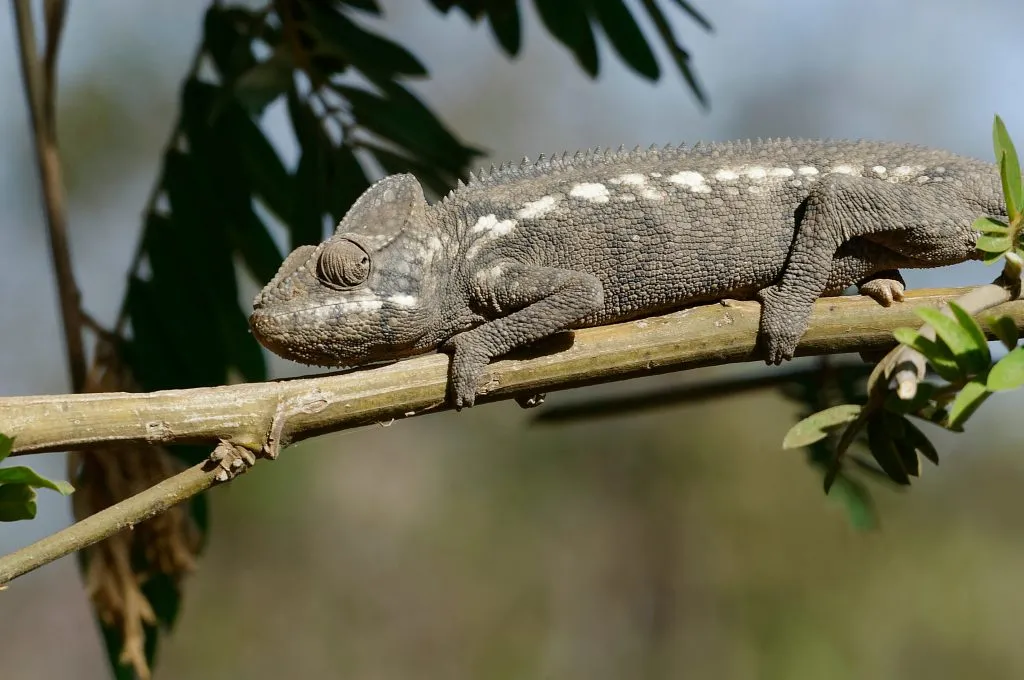
Chameleons are popular pets among reptile enthusiasts because of their vibrant colors and the ability to change their hues. Sometimes, it can be quite surprising to see them switch to a duller, darker color such as brown. But in fact, there are several explanations behind this phenomenon.
Chameleons can turn brown due to several factors, both physiological and pathological. While females tend to be naturally brown, males also adopt this color to show submission. Chameleons can also appear brown when they are cold, sick, stressed or when they have a skin problem or injury.
It is interesting to understand how and why chameleons change their color, specifically when it is the color brown. Additionally, reptile owners should have the skill to discern whether their chameleon’s color change is normal or a cause for concern.
Table of Contents
How and Why Do Chameleons Change Color?
The phenomenon of color changing among chameleons is a scientific mystery that scientists are still trying to fully understand. Chameleons have specialized cells on their skin called chromatophores that contract and expand to change colors.
Chameleons actually change their colors for various purposes, most notably for mating, communication, and sending signals.
For most of what we know, color change is a form of physiological adaptation among chameleons.
On the other end of the spectrum, chameleons can also change colors because of pathological reasons, which will be further discussed in this article.
Sometimes, the color change occurs unrelated to the contraction and expansion of chromatophores.
Physiological Reasons Why Your Chameleon is Brown

1. Your Chameleon Species is Brown Naturally
Chameleons are well-known for their vibrant blue and green hues, so it may come as a surprise to many that some chameleon species are actually brown-colored by nature.
However, brown chameleons are just as skillful at changing colors as their vibrant counterparts.
Brown color can vary greatly within a species, and it is not always the dominant color for all individuals. Other factors such as age, sex, health, and habitat can also affect their natural hues.
The chameleons’ dynamic and ever-changing coloration is what makes them very interesting creatures.
A List Of Brown Chameleons
Here is a list of some species of chameleons that are commonly known to display brown coloration:
- Female panther chameleons (Furcifer pardalis)
- Many dwarf chameleon species (Bradypodion spp.)
- Brown leaf chameleons (Brookesia superciliaris)
- Pygmy chameleons (Rhampoleon spp.)
- Oustalet’s chameleons (Furcifer oustaleti)
- Common chameleons (Chamaeleo chamaeleon)
- Young Jackson’s chameleons (Trioceros jacksonii)
2. Female Chameleons Tend to Have Neutral Colors
The vibrant blue and green hues that chameleons are well-known to have are actually only prevalent in male chameleons.
Female chameleons tend to have duller, brownish colors and this is perfectly normal. The female Oustalet’s chameleons are an exception, as they are more colorful than males.
The natural brown color among female chameleons may serve as a natural camouflage in the forest habitats where they originated. This helps them blend in with their surroundings and avoid detection by predators.
Female chameleons also use color change to communicate their mating status.
For example, when a female panther chameleon becomes gravid (egg-bearing), it becomes dark brown or black with orange striping. This is worth noting if you plan to breed panther chameleons.
3. A Brown, Dull Color Can Be A Sign of Submission
Male chameleons are well-known for their wider variation of color changes. They can emphasize brighter colors during breeding season to attract females, and even during fights with other males. Interestingly, the losers darken their color to signify submission.
In captivity, this may not be frequently observed as male chameleons should generally be housed alone. Unless your chameleon can see its reflection, of course.
Tip: Do you want to know if your chameleon is happy and healthy? Read our article on that here!
4. Cold Chameleons Become Brown to Absorb More Heat
Aside from changing colors to communicate and send signals, chameleons also change their hues in response to environmental cues.
In the wild, the light brown chromatophores of chameleons darken to absorb more light and warmth from the sun after a cold night.
Conversely, the chromatophores can also contract and become light brown when it is too hot.
In captivity, the darkening and lightening of their skin may serve as cues for owners to check if environmental factors such as temperature, humidity, and UVB lighting are optimally set up.
Pathologic Reasons Why Your Chameleon is Brown

5. An Overall Feeling of Malaise
Changing skin color to brown or even darker shades can be a sign that your chameleon is not feeling well or is stressed.
An underlying disease may not be very obvious at first, but symptoms will gradually manifest when your chameleon’s overall health has deteriorated.
If your chameleon’s skin suddenly changes brown, and you cannot pinpoint a physiological cause to it, look out for other signs that may suggest that it is not feeling well.
These symptoms include loss of weight and muscle mass, dehydration, and a weak foot and tail grip.
Tip: If you’d like to know if you handle your chameleon too much, read this article!
6. Fungal Dermatitis
Poor husbandry conditions can lead to fungal infections that may change the appearance of the skin of your chameleon.
Depending on the type of fungi infecting the skin, dermatitis can appear as white, green, brown, or black spots on the affected areas, causing a pathologic color change.

7. Thermal Burns
Another case of pathologic color change occurs when the heat source provided for basking is too intense or too close to the chameleon.
Thermal burns appear as brown, gray, or black areas of damaged skin on the body surfaces most prominently exposed to the heat source.
To avoid thermal burns, ensure that the heat source provided is at an optimal temperature and distance from your chameleon’s basking area.
Interested in learning more about chameleons and their common medical conditions?
Marie Kubiak wrote an entire chapter about it in the Handbook of Exotic Pet Medicine. Of course, if you suspect that your chameleon is sick, an immediate visit to the vet is recommended.
- Enchi Ball Python: A Unique and Stunning Morph of Python regius - March 27, 2025
- Emerald Tree Monitor: The Enigmatic Green Guardian of the Rainforest - March 26, 2025
- The Egyptian Cobra (Naja haje): A Fascinating Serpent - March 25, 2025
